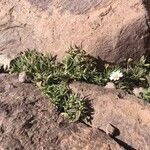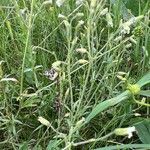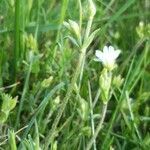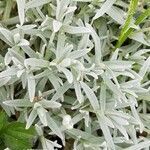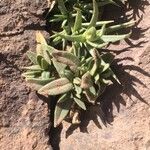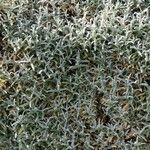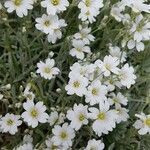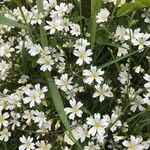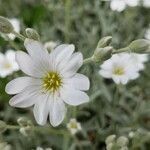Glabrous to densely villous and often glandular perennial, ascending or erect, 1.5–4(–6) dm, branched and often matted at the base; lvs linear to narrowly ovate, 2–7 cm 1–15 mm, usually subtending conspicuous axillary fascicles or short shoots; sep lanceolate, acute, 5–8 mm; pet conspicuous, white, bilobed, 2–3 times as long as the sep; polyploid series based on x=18 (or 9?). Rocky, gravelly, or sandy places, especially in calcareous or magnesian soils, often a weed in abandoned fields and meadows; throughout most of the north-temperate and boreal regions. Apr.–Aug. Highly variable, and often segregated into numerous confluent spp. or vars. (C. campestre; C. oreophilum; C. strictum; C. velutinum) An extremely villous phase on serpentine in se. Pa. and ne. Md. is var. villosissimum Pennell.
Rhizomatous perennial, with caespitose rosettes of short non-flowering axillary branches. Flowering stems decumbent, (5)-10-30-(45) cm tall, with reflexed, eglandular hairs. Lvs narrowly oblanceolate to lanceolate, to linear-lanceolate, ± sessile, (5)-10-20-(30) × 2-5 mm, with eglandular hairs. Infl. lax; pedicels > sepals, with dense glandular and eglandular hairs. Bracts ovate, with scarious margins and short glandular and long eglandular hairs beneath. Sepals with scarious margin, hairy as for bracts but glabrous at apex, 5-7 mm long. Petals almost twice as long as sepals. Styles 2.5-3 mm long. Capsule cylindric, c. 11/2× length of calyx. Seeds c. 1 mm long, tuberculate.
